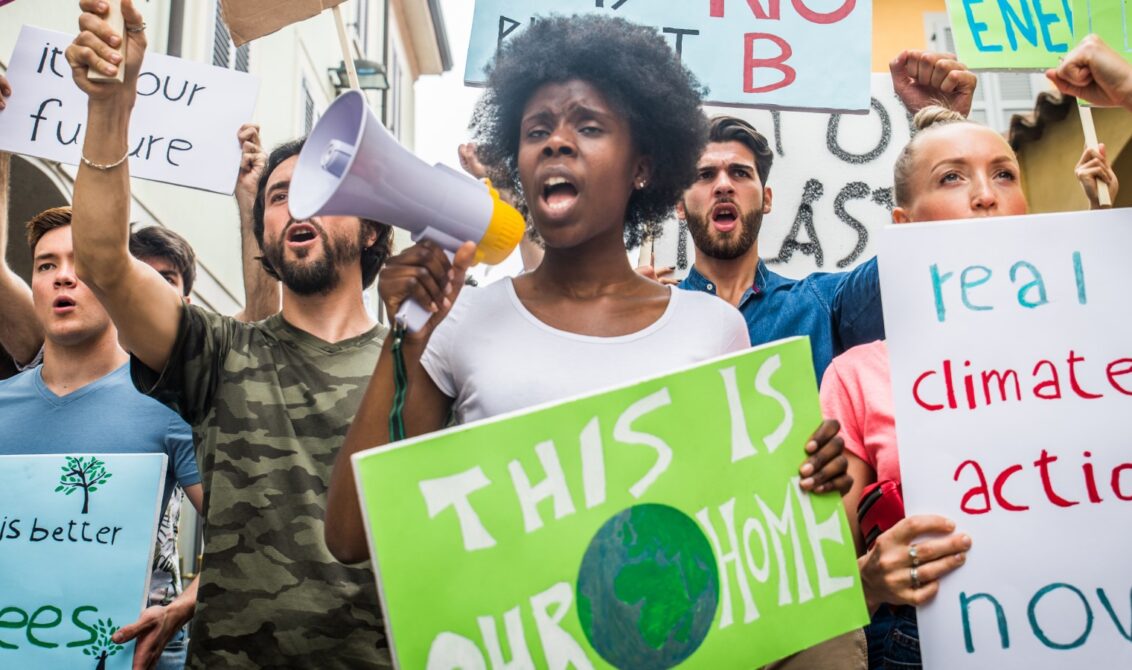
Climate change is something that children and young people are very aware of. Eco-anxiety – the psychological impact of the climate crisis and fear of the future – affects enormous numbers of children and young people.
At the same time, school students are getting involved in climate activism. Greta Thunberg is a figurehead of Fridays for Future. This movement encourages students to strike in order to raise awareness of environmental destruction and demand change from governments and corporations.
But climate activism doesn’t have to take place outside school hours. There’s a powerful argument for including environmentalism within the curriculum. After all, our students are already living through the effects of climate change. They’re seeing real events unfold before their eyes, from deforestation to flooding, forest fires and the extinction of many species.
It’s our responsibility as educators to give them the knowledge, skills and motivation they’ll need to help solve the climate-related problems which they will inevitably face in their adult lives.
How to green your curriculum
Children and young people need access to the natural world to thrive. There are enormous cognitive benefits to spending time outdoors. So, it’s important to teach your students how to respect, bond with and protect our natural spaces. Sustainability is a key principle for the Anthropocene age, and it should be at the centre of our curriculum.
However, it’s important to teach our students about the climate crisis in a way that empowers them, rather than increasing their ecological anxiety.
GreenHeart Education is a primer on transformative education for sustainability. It offers concrete ideas you can put into practice here and now. You’ll find a sustainability focus for each age group that is developmentally appropriate.
So, whether you teach at a pre-school, primary or secondary level, you can teach students about these difficult topics.
Let’s take a look at some ideas:
Nature bonding for students aged 1 to 8 years
Connecting with nature is really important for young children. After all, when they’re older, they won’t be motivated to protect something they don’t care about. The most important thing you can do as an educator, at this stage, is to give them lots of opportunities to connect with and appreciate nature. Here are some suggestions:
- Take your students out to the playground as often as you can. Allow them to have undirected play outdoors.
- Teach children how the rhythms of the natural world connect with our cultural celebrations like Halloween or Easter.
- Discuss the food cycle with your students. You could organise a visit to a farm to pick their own fruit or vegetables so they can make the connection between plants and what’s on their plates.
- Encourage them to hone their observational skills by watching the sky and talking about the weather. Have them observe how playground plants and trees change with the seasons. Also encourage them to discuss insect and bird behaviour that they see when they’re outdoors.
Whether your school is in a rural setting or an inner city location, nature is all around. It’s up to you to find ways of helping your students connect to the natural world.
Read our blog post on bringing nature into the classroom.
Ecological principles for students aged 9 to 11 years
Older children will already have an awareness of themselves as part of a larger community. It’s a good idea to build on this awareness to include the natural world. This is a crucial time for getting children invested in doing their part to protect nature.
You can help them to feel like guardians of the natural spaces around them in the following ways:
- Teach students important ecological principles such as trophic cascades and the carbon cycle.
- Share indigenous nature stories.
- Help them learn to identify local plants, animals, birds and insects.
- Introduce the three Rs (Reduce, Reuse, Recycle) and teach students the ecological principles behind the three Rs.
- Encourage them to keep a nature journal.
- Start a classroom garden, with plants along the windowsills, to teach students to care for plants and interact with nature every day.
- These activities will help your students to understand their place within their ecosystem, and become deeply invested in protecting and sustaining the environment.
Environmental solutions for students aged 12 to 16 years
Once students are in secondary education, it’s the right time for them to learn about the climate crisis. Many students of this age will already be familiar with global heating and the associated issues that it is causing around the world.
In order not to overwhelm them, it’s important to frame the climate crisis as a problem that humans need to solve. Here are some ideas:
- Use environmental examples when teaching maths problems or geography.
- In science classes, teach your students about renewable energies like solar power.
- Encourage them to question the systems around them. For example – does your school recycle? How do students get to school in the morning?
- Explain how social behaviours can make a difference, like eating less meat and using public rather than private transport.
- Focus on language and the arts as tools of communication and persuasion to change behaviour and make a positive difference to the environment.
You can empower your students by encouraging them to use their knowledge to take direct action, wherever they can. For example, they could petition the school administrators to serve vegan food twice a week in the cafeteria, or start a vegetable garden on school grounds. Alternatively, they could encourage students to walk to school as a way to reduce the school’s carbon footprint. They might even like to campaign and fundraise for solar panels as a direct energy source for the school.
Learn more
You can read more about these different stages and associated activities at the GreenHeart Education website. You’ll discover many excellent green teaching resources and ideas for teachers.
Eco Schools is a programme which encourages school students to engage in the environment, with a variety of campaigns which they can start in their own school before expanding to their local community.
Finally, Teach the Future has a Teacher Network where you can find resources. They are UK-based but open to international teachers too.
Sign up to receive our blog updates
Like what you read and want to receive more articles like this direct to your inbox? Subscribe to our blog and we’ll send you a fortnightly digest of the blog posts you may have missed, plus links to free resources to support your teaching and learning.

